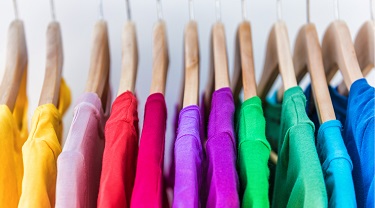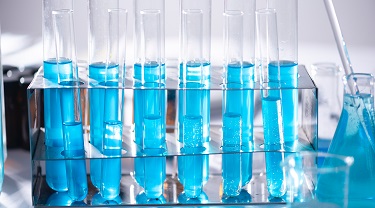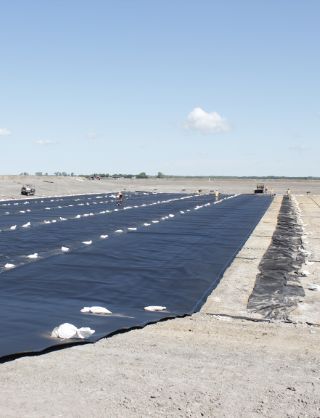
Helping place Europe’s economy on a more resource-efficient path, the EU Ecolabel promotes products that have a low environmental impact across their entire life cycle - from the extraction of raw materials, to manufacturing and packaging, usage, and finally, disposal or recycling to highlight the product’s sustainability.
Developed by the European Commission in 1992, the EU Ecolabel is a key voluntary guideline within the European Commission’s Sustainable Consumption and Production and Sustainable Industrial Policy (SCP/SIP). Its main objective is to educate and guide consumers to choose environmentally conscious products.
Nicknamed the “EU Flower”, the label features a green flower surrounded by 12 blue stars. Close to 70,000 products bear the logo for having passed the rigorous eco-testing.
What are the different products/industries it applies to?
Virtually every product that is manufactured for distribution, consumption or use in the EU market is eligible for the EU Ecolabel.
However, for your application to be considered, you must be a manufacturer, importer, service provider, wholesaler, or retailer marketing products under your own brand name.
What is the criteria and application process?
The criteria development process for the EU Ecolabel involves scientists, non-governmental organizations (NGOs), Member State representatives and industry stakeholders.
Focusing on the part of the process where the product has the highest environmental impact, the EU Ecolabel product-specific criteria ensures that any product bearing the EU Flower has passed the most stringent environmental tests. The product’s impact on the environment, biodiversity, energy and resource consumption, waste generation and emissions are examined.
For instance, because of its size and scope, today’s textile industry is one of the biggest Greenhouse gas emitters on Earth. Textile manufacturing has a big environmental impact: it uses large quantities of water and pesticides to grow cotton, uses water in natural fiber production, creates emissions stemming from producing synthetic and cellulosic fibers, and uses non-renewable resources for synthetic fibers.
This means there are many opportunities to address environmental performance issues within the textile product life cycle, especially in the manufacturing cycle. General concepts such as these ones can be applicable to other industries as well.
Other products, such as electronics, have a very high environmental impact during their use and recycling phase, so the criteria for these products focus on the efficiency of their energy consumption.
What are the benefits?
Consumers today are more sensitive to the environment and the impact they have on it, and want to buy more environmentally friendly products, provided they are properly certified by an independent organization. With use of the EU Ecolabel, your product is identified as one of the high environmental performers available on the market.
On the B2B level, to meet procurement requirements, suppliers are increasing partnerships with eco-friendly manufacturers who work in accordance with the International Organization for Standardization (ISO). Their ISO 14024 scheme involves compliance checks by independent, qualified certifiers, and the EU Ecolabel can be a valuable key for unlocking new business opportunities.
During the criteria compliance phase, the EU Ecolabel can help increase your company's profitability and brand reputation by finding ways of optimizing your products and production processes.
How can the EU Ecolabel help market your Canadian product?
With full implementation of the Canada-European Union Comprehensive Economic and Trade Agreement (CETA), 98 per cent of EU tariff lines are duty-free for Canadian goods. The accord has strengthen economic relations and boosted Canada's trade with the world’s second-largest market, and effective EU Ecolabel marketing can drive a Canadian company’s success abroad.
Consumers are inundated with the “green” claims of thousands of products and having the EU flower visible on your Canadian products and marketing materials guarantees a high level of transparency, reliability and credibility; fulfilling consumers increasing demand for real, environmentally sustainable products.
How can it help you enter new markets?
Consumer markets are changing rapidly as people demand healthier and more environmentally friendly products. Once a niche market, a “Lifestyle of Health and Sustainability” (LOHAS) is emerging globally, and already reflects a third of the industrialized world.
The worldwide LOHAS market is an incredible opportunity for Canadian brands, as those consumers buy based on those values, rather than price. Coupled with a solid Canadian reputation, the EU Ecolabel enables Canadian companies to clearly demonstrate that their products are already in line with ecological market trends.
It’s good business to be green
With the choice of eco-labelled goods, consumers have a direct impact on supply and demand in the marketplace, stimulating market development for environmentally responsible products.
The EU Ecolabel is an effective way of empowering environmentally conscious shoppers to choose products that are more compatible with their personal environmental objectives.
And, as it guides the market towards greater environmental awareness, products with the EU Ecolabel encourage corporate commitment to continuous environmental improvement.






